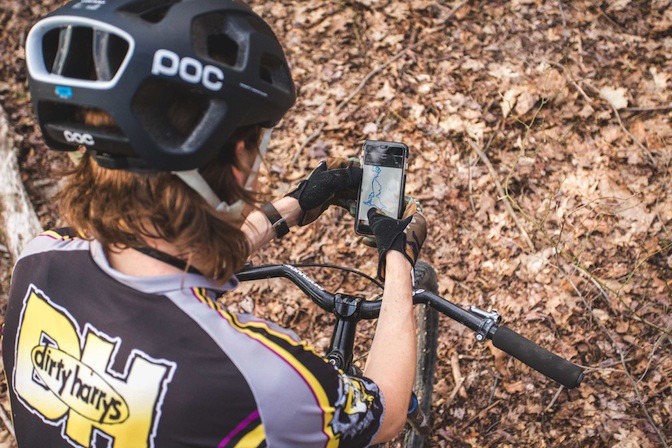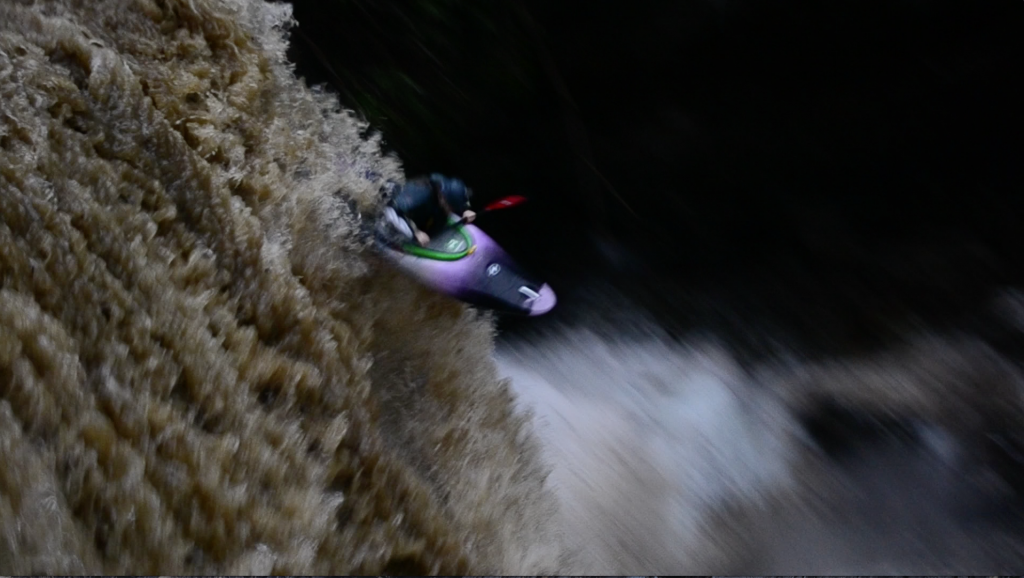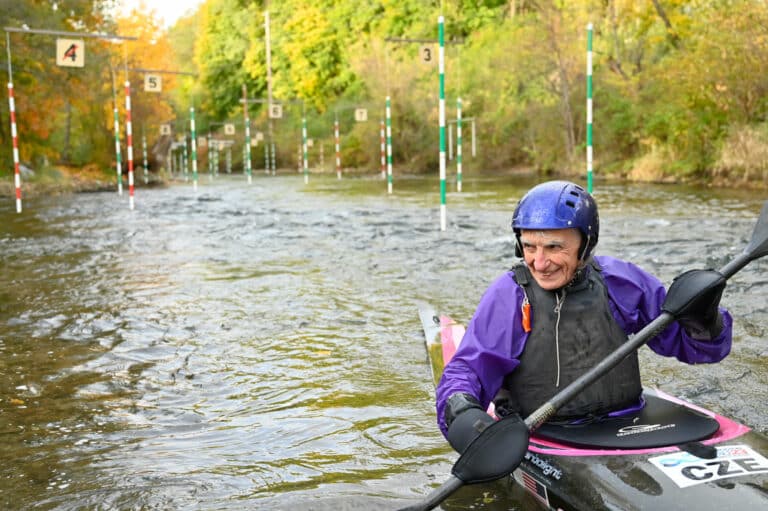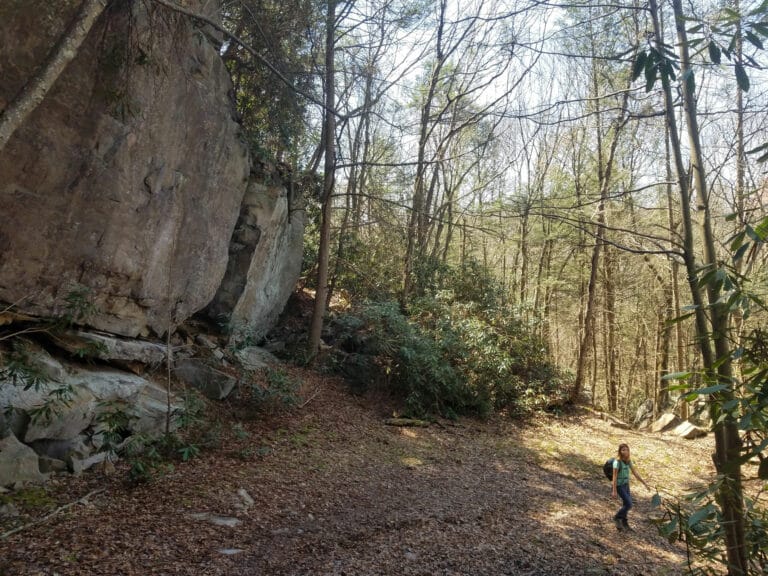“You’ve got to be kidding me.”
I dumped the contents of my dry bag onto the ground, picking through the soggy candy wrappers and first aid supplies until not a single item had gone unturned.
“Daddio, let’s go!” my friend shouted from the river’s edge.
It was six o’clock. Daylight was fading fast. Our group of three had decided not two hours earlier that we would try to squeeze in a lap down the Big Sandy, a class IV-V run at the heart of the Cheat River watershed. I’d waited an entire year to run this classic stretch of West Virginia whitewater, arranging my travels so I could be in the area when spring flows peaked. Though we’d be pressed for time, I was excited to get my personal first descent (PFD) and document the adventure with my trusty sidekick, a GoPro Hero 3+.
The only problem? I’d forgotten the GoPro mount.
“Dude, what took you so long?” my friend asked as I finally situated myself in the cockpit of my kayak and slid into the water.
“I was looking for my GoPro mount,” I said.
“Well, where is it?”
“I forgot it.”
My friend’s eyes widened. He rammed my boat with the bow of his.
“What do you mean you forgot it,” he asked? “How are we gonna get shots of you coming off Wonder Falls?”
“That’s not what it’s about,” I said, hardly convincing myself. “Let’s just paddle.”
We set off downstream, and for the first half hour, I barely took notice of the immense rock walls rising from the river and the golden sunlight peeking over the treetops—I was too busy kicking myself for forgetting that stupid piece of plastic.
In my mind, I could see the picture that I’d never have: the spray of Wonder Falls against an early evening haze, my green boat soaring off the lip of that glorious 20-footer, blade planted firmly, face part-bewildered, part-determined. No. There would be none of that. There would be no evening GoPro viewing over a round of beers, no posting a photo of my first waterfall run to Instagram, no proof that I’d even paddled the Big Sandy at all save for a bloody knuckle and my friend’s word.
So would anyone believe that it had happened at all?
This isn’t the first time I’ve struggled with being in the moment and wanting to document it, too. I once hiked for two hours in the dark to shoot a sunrise, only to realize at the summit that I’d left my camera battery plugged into the wall back home. And while, eventually, I was able to get past my irritation and enjoy the picturesque morning in technology-free, unadulterated bliss, I couldn’t help but let one dangerous thought sneak into my consciousness—I got up at 3 a.m. to hike for nothing.
Of course, it wasn’t for nothing. While there would be no mountaintop selfie to share with my friends on Facebook, the scene of the rising sun illuminating the valley floor remains imprinted in my memory as clear as if I had seen it yesterday. Still, it got me thinking: why was I up there anyway? Was it really for the sunrise?
There’s no denying that the reach of social media has extended far beyond our screens. Adventure photographers like Corey Rich and Renan Ozturk post to Instagram amid the world’s most extreme settings. From the Dawn Wall of El Capitan to the high altitude peaks of Myanmar in Southeast Asia, armchair travelers can revel in the exotic and the epic without ever leaving their desktop. These days, social media is inescapable, seemingly as essential to adventure as the adventure itself.
But is that necessarily a bad thing? While it could be argued that social media platforms have taken away the mysteries of the world and exploited our natural playgrounds, particularly designated wilderness areas, is it possible to make the case that social media has actually played an important role in getting more people outside?
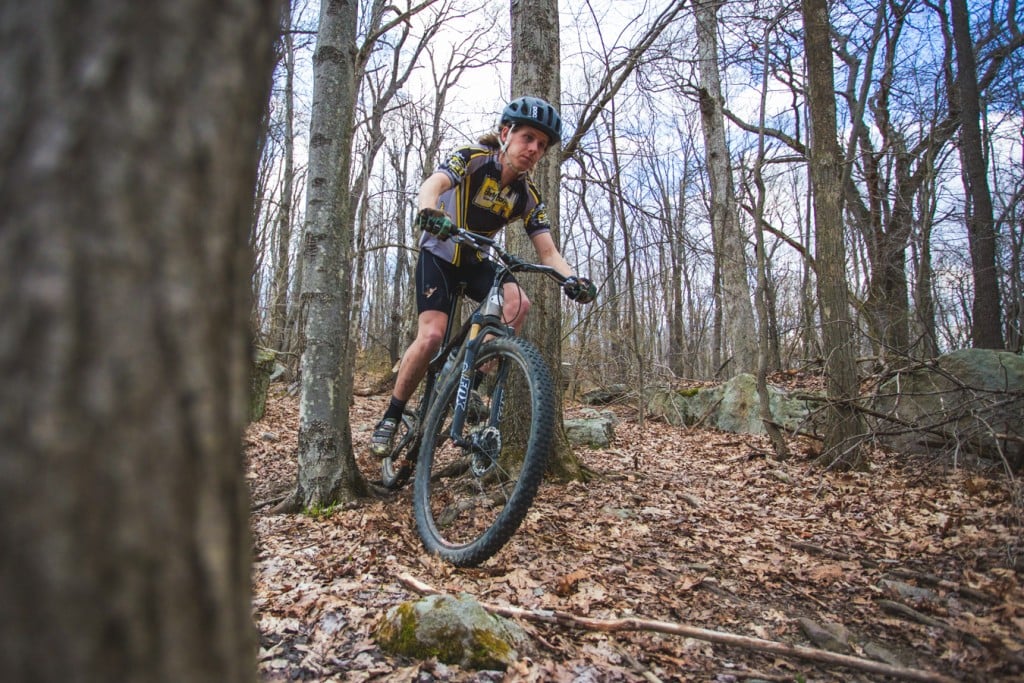
“It’s a double-edged sword for sure,” says Mark Eller, communications director for the International Mountain Bicycling Association (IMBA) and mastermind behind the online forum MTB Project.
Eller has spent the better part of his life on a set of wheels. Just a few years ago, however, his obsession with riding took a different turn when he downloaded a new social media app designed with the competitive rider (and runner) in mind: Strava.
Touted as an all-encompassing fitness app that logs everything from calories burned to GPS coordinates, Strava certainly isn’t the only app of its kind. But its ability to break down rides into segments and put users’ times against each other on a digital leaderboard has spurred a new generation of athletes to go hard in pursuit of their rightful place atop the cyber podium as King of the Mountain (or KOM).
“We call them ‘Stravaletes’,” says New River Bikes owner Andrew Forron. “That or ‘Strava-assholes.’”
If you couldn’t tell, Forron’s not the biggest fan of Strava. In fact, should you find yourself on a group ride in the New River Gorge with Forron at the helm, don’t be surprised if he asks you to turn it off. If you don’t, consider this: he’s not afraid to do it for you.
“I think it’s terrible,” Forron says about Strava. “I think it’s changed how people interact together when they go places. It used to be when you went somewhere, you went to the bike shop, met the folks there, and tried to get in on their after-work ride.”
Now, Forron says, cyclists don’t need the bike shop community to find the cool local loops in town—all they need is a little cell coverage and a Strava account.
“It creates a false sense of community,” Forron adds, “and it’s caused more people to ride alone.”
Though there’s undoubtedly some truth in Forron’s claim, for riders like Eller, Strava affords ambitious individuals an outlet for that need for speed.
“It allows you to have a competitive riding experience wherever you are, whether you’re with someone else or not,” Eller says of the fitness app. “I’m a dad with a three-year-old and a six-year-old, and for a number of years, I haven’t been able to go out to races. Strava opened the door to get that competitive vibe back in my riding.”
Mike Cordaro of Mount Pleasant, Penn., couldn’t agree more. Look up any route on Strava in the southwestern corner of Pennsylvania and Cordaro’s name is likely somewhere near the top five. In total, Cordaro’s racked up over 50 KOMs on his home turf in preparation for this year’s National Ultra Endurance (NUE) series, and says the app has helped him keep track of his weekly averages (three rides, 80 miles, seven and a half hours in the saddle).
“I’m not chasing KOMs every time I go,” Cordaro says, “but it motivates me. I see other people ride [on Strava] and feel like I need to get after it.”
And while Cordaro and Eller and, heck, even Forron, can agree that anything which motivates you to get on your bike is ultimately good, Strava has recently come under legal attack for influencing cyclists in particular to ride faster on trails that have no business being the stage for an unofficial time trial.
“Public trails don’t necessarily make great race courses,” Eller says. “You have to be discerning about when and where it’s appropriate to gear your brains out.”
“Strava’s not a reason to forgo trail etiquette,” Cordaro adds. “Ultimately, if [competitive cycling] is your goal, the best way to do that is racing.”
Still, even Eller admits to allowing his competitive instincts to get the best of him, riding for weeks at a time without ever turning Strava off. But in a blog he posted on IMBA’s site titled “Confessions of a Strava Addict,” Eller brings up a good point, stating, “…it’s not like my nerdy geek posse wasn’t comparing times before Strava.” Whether by Garmin or by pencil and paper, mountain bikers have been keeping track of ride data for as long as mountain biking has existed.
The only difference now? You can’t fudge the facts, something Maryland-based kayaker Ian Wingert knows all too well.
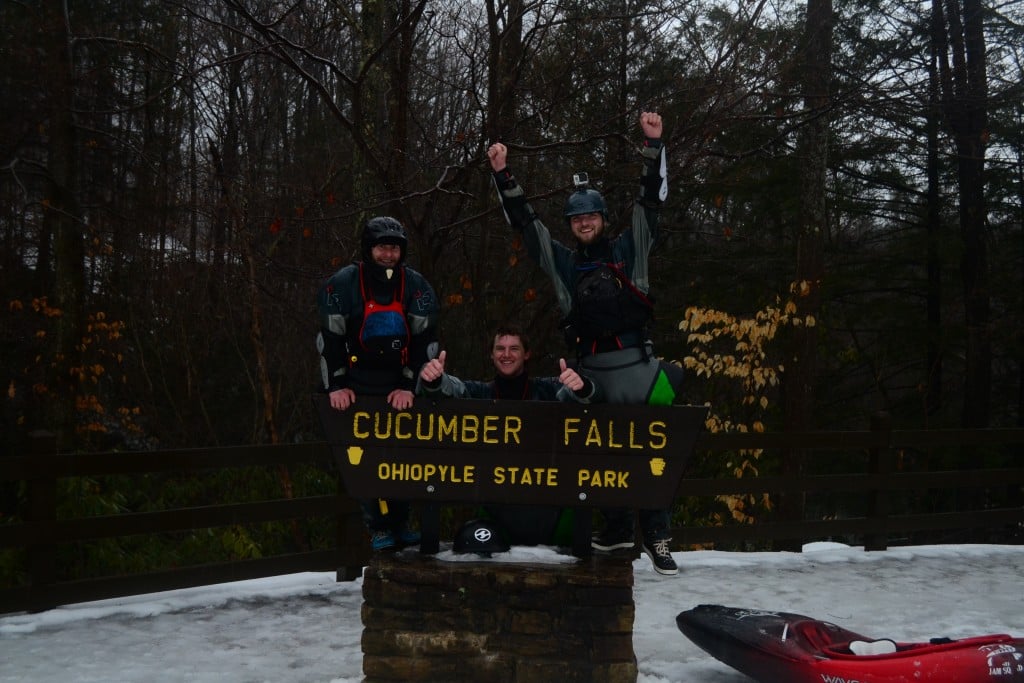
Back in early March, Wingert and two of his fellow paddlers, Todd Baker and Wyatt Hyndman, successfully navigated the first descent of Cucumber Falls outside of Ohiopyle, Penn. At almost 40 feet in height, Cucumber Falls isn’t the tallest waterfall to be run in the Laurel Highlands, but it’s likely the driest.
“We knew it was going to run one to two days a year,” Wingert says. “We can’t really afford trips to Mexico or the Northwest, so when this came along, we knew we had to do it.”
The crew had been scouting the line at Cucumber Falls for nearly three years but the water level was never high enough for an attempt. After a few days of heavy rain and snowmelt in late February 2015, however, the opportunity finally presented itself—it was now or never.
With a friend setting safety at the bottom, all three paddlers styled clean lines over the drop. But it was in the pool below the falls that two of the three, Wingert included, got into trouble. A fallen log blocked the current’s main flow on river right, creating what’s referred to as a “strainer.” Though Wingert and Hyndman hit the log head-on, they flushed through and escaped unscathed. Baker altogether avoided the strainer and safely eddied out above, but as the three would soon find out, that log would prove to be the least of their problems.
“The video made it look like we disregarded the fact that there was wood at the bottom and like we were disregarding safety,” Wingert says of the two-minute edit Baker compiled from their first descent footage.
The video, which Wingert and Baker’s employer Immersion Research (one of the whitewater industry’s leading gear manufacturers) later posted to its Facebook page, attracted over 100,000 views and received nearly 2,000 shares in the first few hours of going live. The first descent was suddenly viral, but not without controversy.
“Just dumb,” read one comment.
“I’m calling that bad etiquette. Bad safety and stupid,” read another.
Yet countless more comments rallied in defense of Wingert and his crew, arguing that, as with any adventure, not everything goes according to plan. Risk is inherent in any endeavor, especially when it comes to tackling first descents.
“A lot of people who saw it as negative thought it was dumb luck, like we weren’t talented paddlers, just dumb kids with GoPros,” Wingert says. “It brought me down in the moment,” but not so much that he turned away from social media altogether.
Whether he’s cranking out laps on the Top Yough in his backyard or making multi-day kayaking trips down to western North Carolina, Wingert is as active on social media as he is in a boat and says that Facebook in particular has been a useful tool in organizing paddling trips. What’s more, the ‘group’ function on Facebook allows area paddlers to post updates on rivers and creeks, notifying other river users about access issues, environmental threats, water levels, and, ironically, new strainers. A simple status update can rally a post-work group paddle. Stranded at the takeout without a shuttle?
“It’s great for that kind of thing,” Wingert says. “It’s cool to see what everyone else is doing, unless you’re stuck at work and your friends are paddling.”
While Wingert is hesitant to say whether or not he would ever attempt Cucumber Falls again, he is certain that his group won’t be the last. And as for the falls? A sign posted by state park officials the day after Wingert’s first descent now reads loud and clear.
Cucumber Run closed to boating.
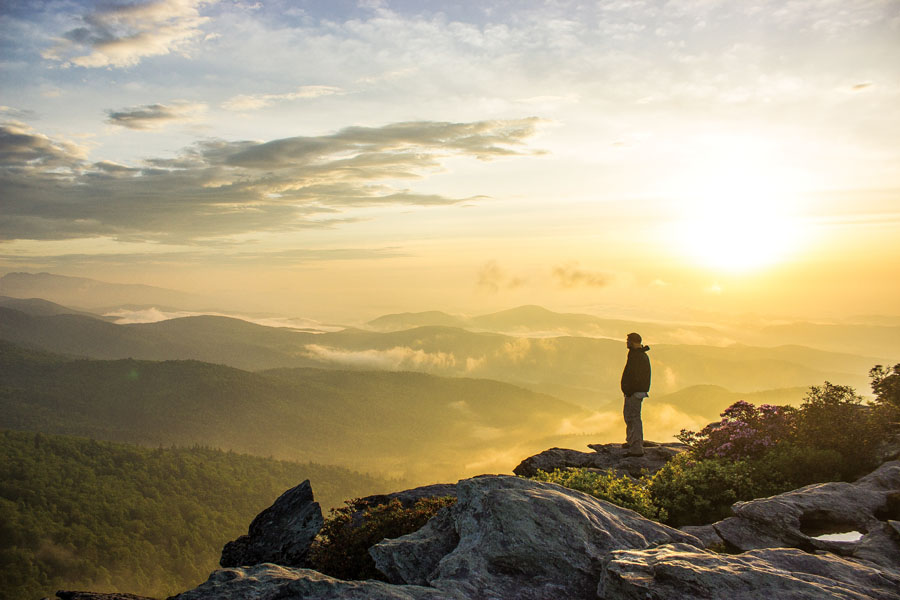
The closure of Cucumber Run and the subsequent falls is just one of many instances where the power of social media has forced officials to respond in a way that’s not exactly favorable to outdoor enthusiasts. One of the biggest culprits these days? Instagram.
“It’s a really touchy subject,” says western North Carolina-based photographer Justin Costner on shooting photography in public lands.
Though Costner himself has never had any run-ins with the Forest Service, he’s heard enough horror stories about court dates and hefty legal fines that he’s taking the better-safe-than-sorry approach by purchasing a commercial photography permit.
“I understand not violating the forest, but I think people should have the right to shoot photos from their adventures and trips,” he says.
Costner, like any respectable outdoor recreationalist, practices Leave No Trace (LNT) principles and respects even the strictest of regulations in areas like the Linville Gorge Wilderness, but not all photographers are as considerate.
In March 2014 for instance, popular Instagrammer Trevor Lee (@trevlee) was charged with nine misdemeanors for camping and climbing trees in undesignated areas of Yosemite in pursuit of a better angle. Later that same year, Casey Nocket (@creepytings) made national news when she posted Instagram photos of portraits she had painted on rocks in eight national parks. Though Nocket called it “art,” the park service had a different word for it: vandalism. Lee and Nocket are extreme examples of a gram-gone-bad, but their trials should serve as warning to Instagram users with tunnel vision for the perfect shot.
In general, though, the average Instagram user is an amateur photographer with a trigger-happy finger and a desire to be inspired. That’s how Jessica Georgia (@jessicageorgia) came to decide to thru-hike the Appalachian Trail and document all 2,180 miles of the journey through her Instagram feed.
“One of my passions and hobbies is photography,” Georgia says. “That’s initially what got me into Instagram, but then I started finding outdoor locations I didn’t even know existed.”
From there, Georgia started getting inspired in a big way, and not just to take more photographs: hiking became her newfound love. The idea of thru-hiking the Appalachian Trail was romantic to Georgia, who, at 30 years old, is both a wife and a mother to a 12-year-old daughter. But when her family hiked through the Grayson Highlands during peak thru-hiking season, Georgia got the affirmation she needed that the A.T. was her calling.
“It was so inspiring and I was so envious,” Georgia recalls, “but at the same time, I didn’t know if I could do it.”
Yet just a year later, Georgia was taking her first steps along the white blaze at Springer Mountain. To ease the distance between mom-on-the-trail and family-at-home, Georgia says she tries to update her Instagram as frequently as possible so her daughter may be able to better grasp what a thru-hike actually entails.

Take a quick scroll through her feed and you’ll see the good and the bad of thru-hiking: swollen feet, bug bites, fellow hikers, trail angels, sweeping vistas. Following Georgia’s Instagram is about as close as you can get to hiking the trail yourself without ever leaving your home. And for Georgia, the supportive network of followers has been just as rewarding to her as the hike itself.
“It’s encouraging when you can post something to Instagram and have people say, ‘That’s amazing Jess keep going!’ Having that community cheering you on is definitely a mental boost,” something that, as any thru-hiker can attest to, will surely brighten even the worst of days.
Like Georgia, that sense of community is what I cherish about social media. Though my Facebook feed is often plagued with incoherent political and personal rants, it’s proven invaluable as a tool for making connections and finding story ideas. In fact, each and every one of the people I interviewed for this story were all contacted initially via social media, be it through Facebook or Instagram.
But, as nearly all of my subjects pointed out, that’s not to say there aren’t pitfalls to the platforms. Do I think there’s such a thing as “oversharing”? Yes: I don’t need to see everything you eat. Do hashtags annoy me? When there are more hashtags than caption copy, most definitely. Does social media dictate the way I choose to spend my time in the outdoors?
Absolutely not.
As I sat atop that summit watching the rising of the sun, the weight of a battery-less camera sinking into my lap, I wasn’t thinking about the likes and comments I wouldn’t receive. I was thinking how damn lucky I was to be me in that moment witnessing one of the most overlooked miracles of this world.
As Mark Eller from IMBA so simply put it, “People have to remember that you can turn it off if you want to.”
So turn it off, if you want to.
